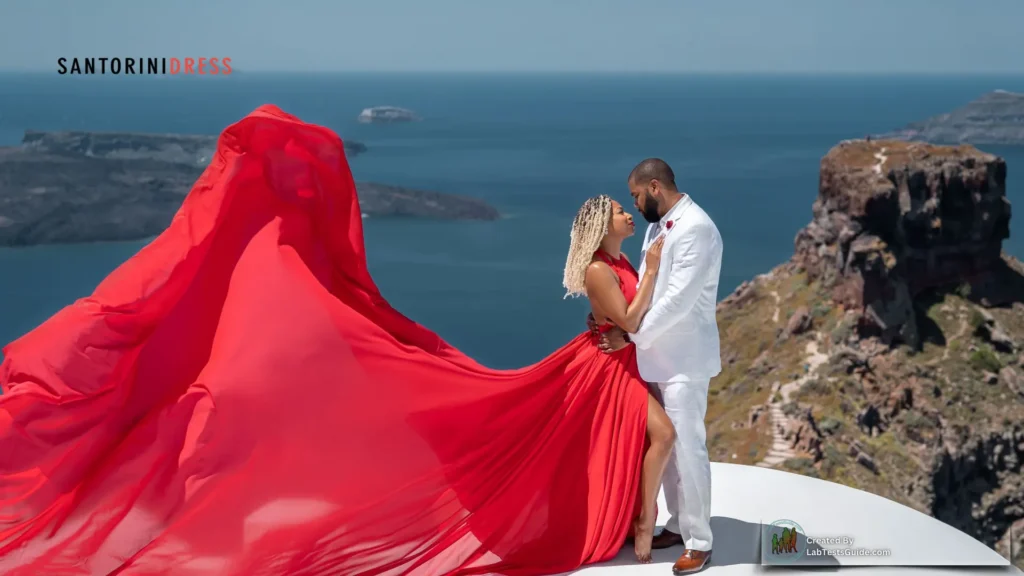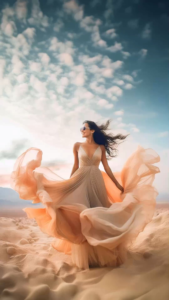Light dresses are timeless, offering elegance and versatility for photoshoots. Whether capturing serene moments or experimenting with bold concepts, these gowns create stunning visuals. However, achieving perfection requires planning and attention to detail. Let’s explore how to organize a shoot that highlights beauty and ensures flawless results.

Photography is about storytelling. A well-executed session transforms simple attire into art, leaving lasting impressions. Every element—from fabric choice to posing—plays a role in creating memorable imagery. Ready to elevate your next shoot? Book a flying dress photoshoot and experience the perfect blend of elegance, movement, and creativity, ensuring breathtaking results that stand out.
Choosing the Right Dress
Fabric Matters

Light materials like chiffon, silk, or organza drape gracefully, creating soft silhouettes. These textiles catch light beautifully, enhancing visual impact.
Flowing fabrics add movement, making images feel alive. For example, a flying dress photoshoot often relies on lightweight gowns to achieve ethereal effects. Wind amplifies this movement, creating dynamic compositions that captivate viewers.
When selecting fabric, prioritize comfort. Lightweight materials ensure ease during sessions, allowing models to move freely without feeling restricted.
Color Selection
Neutral tones blend seamlessly with natural settings. Pastels evoke calmness, while bold shades make statements.
Consider surroundings when selecting hues. Soft lavender suits serene landscapes, while deep crimson complements dramatic backdrops. Matching colors to mood and theme ensures cohesive visuals.
For instance, golden hour lighting pairs beautifully with warm tones like ivory or blush. Cooler shades like mint green or baby blue work well against coastal or mountainous settings.
Design Details
Intricate embellishments elevate style. Lace, embroidery, or beadwork adds personality, ensuring each piece feels unique.
Asymmetrical hems or cascading trains amplify drama without overwhelming simplicity. Focus on balance, ensuring details complement overall silhouette. For example, subtle lace patterns enhance elegance without drawing attention away from surroundings.
Picking the Perfect Location
Scenic Backdrops
Natural settings enhance beauty. Cliffs, beaches, and fields provide stunning backdrops, allowing fabric to unfurl fully.
A flying dress photoshoot often benefits from open spaces. Wind amplifies effect, making material dance effortlessly against vibrant landscapes. Coastal cliffs or rolling hills introduce depth, creating cinematic visuals.
Golden hour lighting enhances textures of stone paths or rugged terrain. Shadows add dimension, highlighting intricate details of both gown and environment.
Urban Charm
Cityscapes bring modern flair to classic gowns. Historic architecture or contemporary structures serve as unique backdrops.
Narrow streets and open plazas allow fabric to flow freely, creating contrast between old-world charm and sleek design. Rooftop views showcase cityscapes, ideal for dynamic compositions. Graffiti-covered walls or industrial settings introduce edgy vibes, appealing to diverse audiences.
Hidden Gems
Explore lesser-known spots for privacy and uniqueness. Quiet alleys, vineyards, or secluded shores offer intimate settings.
These locations suit relaxed themes. Models posing against rustic backdrops create romantic visuals, especially during golden hour. Olive groves or lavender fields introduce natural beauty, enhancing authenticity of imagery.
Planning the Shoot
Timing Is Key
Early mornings or late afternoons ensure optimal lighting. Soft light enhances fabric texture, avoiding harsh shadows.
Weather plays a role too. Breezy conditions help fabric move naturally, adding authenticity to images. Calm days can limit movement, so plan accordingly.
Golden hour provides diffused illumination, eliminating harsh contrasts. Light reflects off water or stone, enhancing glow of fabrics and skin tones. Twilight introduces softness, perfect for romantic themes.
Working with Movement
Encourage models to interact with surroundings. Twirling or walking adds fluidity, capturing motion in stills.
Open areas allow fabric to unfurl fully. Avoid cramped locations that restrict flow, ensuring trains spread wide. A flying dress photoshoot relies on space to highlight fabric movement, creating mesmerizing effects.
Dynamic poses highlight versatility. Each angle showcases different aspects of gown, keeping compositions fresh and engaging.
Choosing Accessories Wisely
Minimalist jewelry complements elegance without overpowering look. Delicate necklaces or earrings enhance features subtly.
Floral crowns or ribbons add whimsy, perfect for bohemian themes. Shoes should prioritize comfort while matching gown style. Barefoot shots introduce natural charm, especially on sandy beaches or grassy fields.
Creative Techniques for Stunning Shots
Experimenting with Angles
Low perspectives emphasize fabric spread across ground, while aerial shots showcase full train length. Drones capture sweeping views, highlighting scale.
Close-ups focus on intricate details like embroidery or lace. Macro lenses reveal beauty often overlooked in wide compositions.
Wide shots capture grandeur of surroundings, blending subject with environment. Balance is key—ensure gown remains central while incorporating scenic elements.
Incorporating Props
Flowers, lanterns, or veils enhance storytelling. Bouquets complement bridal themes, while hats add vintage flair.
A flying dress photoshoot paired with props creates layered visuals, adding interest to compositions. For example, holding a parasol introduces playfulness. Fishing nets or baskets introduce cultural context, perfect for seaside shoots.
Playing with Editing Styles
Soft filters enhance romantic vibes, while bold edits add drama. Black-and-white tones highlight contrast, focusing on shapes and textures.
Editing should enhance, not overpower. Subtle adjustments maintain natural beauty of gown and surroundings. Tools like Lightroom or Photoshop allow fine-tuning colors, lighting, and textures for maximum impact.
Common Mistakes to Avoid
Ignoring Wind Conditions
Calm days limit fabric movement. Plan sessions during breezy weather to maximize effect.
Overpowering winds can disrupt poses. Balance is key—gentle breeze works best. Test fabric beforehand to ensure it behaves as expected.
Overcrowded Locations
Busy spots detract from focus. Choose quieter times or hidden gems for uninterrupted sessions.
Background clutter competes with gown, reducing impact. Keep compositions clean and simple. Scout locations in advance to avoid surprises.
Neglecting Comfort
Models must feel at ease. Heavy materials or restrictive designs affect poses and expressions.
Practicality matters. Ensure outfits allow freedom of movement without sacrificing style. Comfortable footwear and lightweight materials make sessions smoother.
Overlooking Details
Small elements like hair styling or makeup influence overall look. Natural makeup enhances features without overpowering elegance of gown.
Hair should complement attire—soft waves or braids pair beautifully with flowing fabric. Ensure accessories align with theme, maintaining cohesion throughout shoot.
Creating Timeless Moments with Light Dresses
Organizing a photoshoot in a light dress requires thoughtful planning and creativity. Whether experimenting with a flying dress photoshoot or exploring scenic locations, attention to detail ensures success.
With passion for storytelling and focus on harmony between subject and surroundings, your session will capture timeless beauty. Remember, true magic lies in simplicity and authenticity.
P.S. If you’re inspired by this trend, consider incorporating a flying dress photoshoot into your next project. Its flowing fabric adds drama and grace, ensuring your images stand out.
Photography thrives on emotion and connection. Light dresses’ ability to evoke both makes them a dream choice for creators seeking to captivate their audience.
Possible References Used







